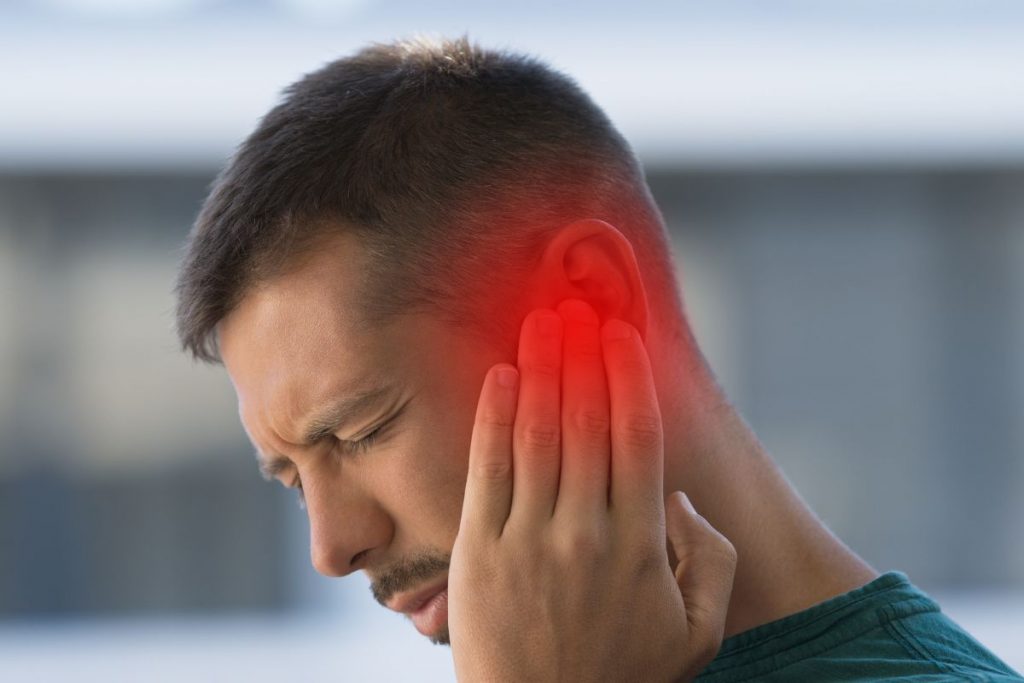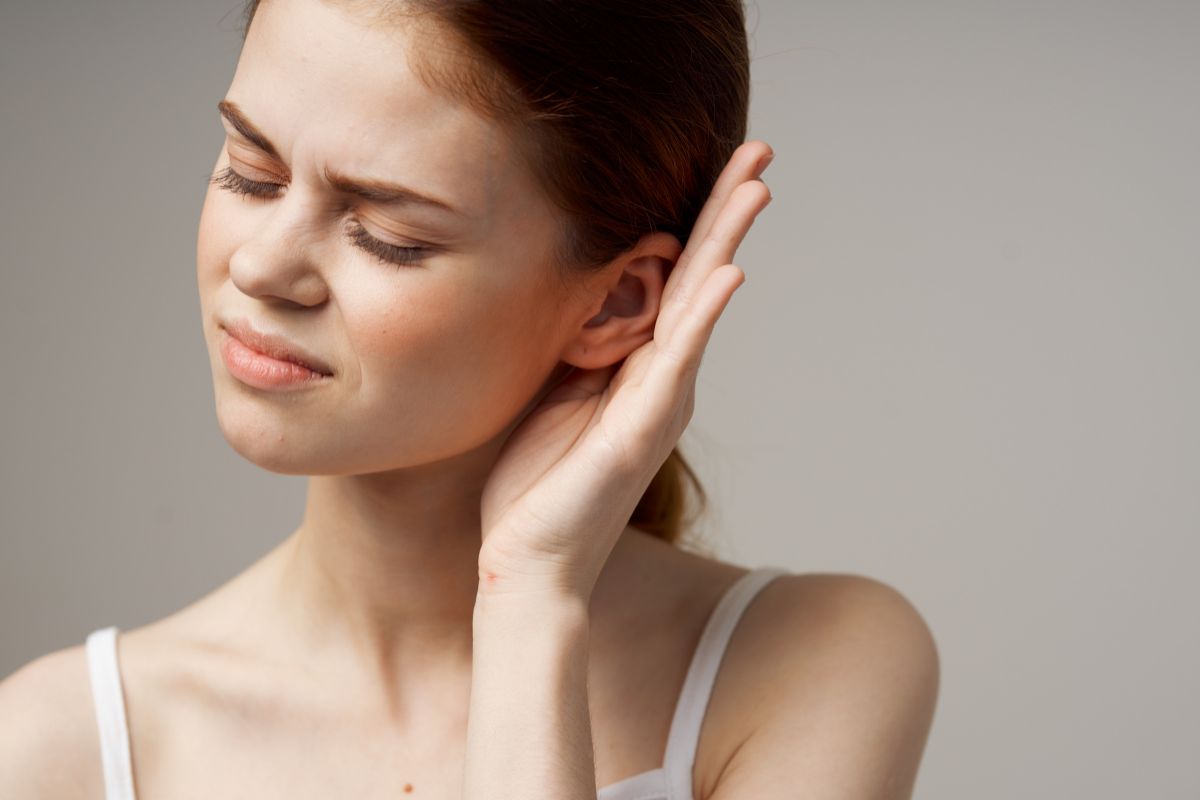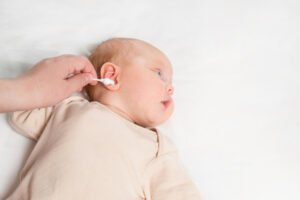Introduction - Allergic rhinitis and ear symptoms

In this article, Dr Shree Rao talks about how to manage ear health and allergies. She is the Best Doctor for Cochlear Implants.
Allergic rhinitis, commonly known as hay fever, is a prevalent condition characterized by inflammation of the nasal passages due to allergen exposure. While it primarily affects the nose, it can also impact the ears, leading to various ear symptoms. Understanding the correlation between allergic rhinitis and ear health is crucial for managing the condition effectively.
This inflammatory response triggered by allergic rhinitis can extend beyond the nasal passages to affect the Eustachian tubes. These small passages connect the middle ear to the back of the throat. Unfortunately, when these tubes become blocked due to swelling or mucus buildup, it can lead to ear symptoms such as ear fullness, pressure, and even pain.
The interconnectedness of allergic rhinitis and its potential impact on the ears highlights the importance of comprehensive care. Recognizing how allergic rhinitis can influence ear health empowers individuals to seek timely intervention, ensuring proper management and relief. Dr. Shree Rao, specializes in providing tailored solutions for conditions like these, ensuring individuals experience improved ear health and overall well-being.
Eustachian tube dysfunction and allergies
Understanding the vital role of the eustachian tube in maintaining ear health is key to comprehending the connection between allergies and its dysfunction. The eustachian tube, a narrow passage connecting the middle ear to the back of the throat, plays a pivotal role in equalizing air pressure, draining fluids, and regulating the middle ear environment.
Allergies can trigger inflammation in the nasal passages, leading to swelling and increased production of mucus. This inflammation can extend to the eustachian tube’s opening, obstructing its proper functioning. The resulting eustachian tube dysfunction can impede the drainage of fluids from the middle ear, causing a sensation of ear fullness, decreased hearing, and even pain.
Eustachian tube dysfunction due to allergies disrupts the equilibrium of air pressure between the middle ear and the environment, leading to negative pressure within the ear. This pressure imbalance can result in discomfort and muffled hearing. Additionally, impaired drainage can cause fluids to accumulate in the middle ear, potentially leading to infections or other complications.
Middle ear infections and allergies
The intricate connection between middle ear infections and allergies holds significance in the realm of ear health. Allergies can elevate susceptibility to middle ear infections, known as allergic otitis media. This dynamic interaction underscores the importance of recognizing symptoms, seeking prompt intervention, and embracing preventive strategies.
Allergies initiate an inflammatory response in the body, which, when affecting nasal passages, can extend to the eustachian tubes, causing blockages. This environment becomes conducive to bacterial growth within the middle ear, escalating the risk of infections.
Recognizing symptoms akin to conventional middle ear infections, such as ear pain, fluid discharge, diminished hearing, and ear fullness, is pivotal in early detection. This awareness, coupled with understanding their alignment with allergies, facilitates timely medical attention.
Allergy-induced otitis externa

Within the sphere of ear health, allergy-induced otitis externa stands as a significant concern. This particular form of inflammation affecting the outer ear is prompted by allergic reactions to diverse substances, which can encompass certain skincare products, jewelry metals, or environmental allergens. The ensuing allergic response engenders telltale symptoms such as persistent itching, noticeable redness, and noticeable swelling of the external ear canal. While discomfort is a common consequence, it’s essential to note that this condition can potentially influence hearing function as well.
The importance of recognizing the symptoms of allergy-induced otitis externa cannot be overstated. Discerning these signs early on allows for prompt intervention and an informed approach to treatment. Moreover, pinpointing the specific allergens responsible for triggering the condition is equally vital. This knowledge aids in adopting tailored strategies to effectively manage and mitigate the allergic response.
Hearing loss and allergic responses
The relationship between hearing loss and allergic responses is a multifaceted aspect of auditory health that merits thorough exploration. Allergic reactions, often triggered by diverse environmental factors or specific substances, can exert influences on hearing function through various mechanisms.
One prominent avenue through which allergies can contribute to hearing loss is by impacting the middle ear. Allergic inflammation, characterized by an immune system response to allergens, can disrupt the delicate equilibrium essential for optimal auditory function. This disruption is particularly notable in the Eustachian tubes, small passages connecting the middle ear to the back of the throat. Allergic inflammation can lead to Eustachian tube dysfunction, a condition where these tubes struggle to equalize air pressure effectively.
As a result, individuals with allergies may experience a range of issues such as fluid accumulation in the middle ear, pressure changes, and impaired sound transmission. These factors collectively contribute to a decreased ability to hear clearly and accurately.
Allergic reactions to ear care products
It’s essential to acknowledge the potential reach of allergies beyond skincare products, impacting various ear care items. These products could encompass components such as fragrances, preservatives, or latex, capable of triggering allergic reactions upon the delicate skin within the ears. These reactions can induce itching, redness, or discomfort, underscoring their influence. However, the implications extend beyond discomfort, potentially disrupting the equilibrium within the ears and engendering further complications.
To avoid such scenarios, individuals aware of their allergies are advised to opt for ear care products designated as hypoallergenic or free from fragrances.
Seasonal allergies and ear health
In the context of ear health, it’s pivotal to recognize the far-reaching effects of seasonal allergies that extend beyond the more visible symptoms. Triggered by environmental factors such as pollen, these allergies can exert a substantial influence on various aspects of auditory well-being.
Seasonal allergies can give rise to a range of symptoms, from nasal congestion and sneezing to itchy and watery eyes. However, their influence isn’t limited to the upper respiratory tract. Allergic responses can also affect the Eustachian tubes.
Addressing seasonal allergies is pivotal in maintaining optimal ear health. Individuals prone to allergies should adopt precautionary measures such as avoiding allergens whenever possible.
Allergy testing and ear-related sensitivities
In the realm of medical diagnostics, understanding the connection between allergies and various health issues has gained prominence. One intriguing area of investigation is the relationship between allergic triggers and ear-related sensitivities. By employing advanced methods of allergy testing, healthcare professionals can unearth vital insights into the causes of ear symptoms, ultimately aiding in the creation of personalized allergy management plans for maintaining optimal ear health.
Several methods of allergy testing can be utilized to pinpoint potential sensitivities contributing to ear-related issues. These methods include:
A common procedure that involves applying small amounts of allergens to the skin and observing for any allergic reactions. In the context of ear health, this test can help identify allergens that might be triggering ear symptoms.
Specific blood tests, such as the ImmunoCAP test, measure the levels of specific antibodies (IgE) produced in response to allergens. Elevated IgE levels can indicate the presence of allergies that might be connected to ear sensitivities.
This test is particularly useful in identifying contact allergies that might contribute to ear-related discomfort. Various substances are applied to adhesive patches, which are then placed on the skin to detect delayed allergic reactions.
In cases where food allergies are suspected to be linked to ear issues, an elimination diet can be employed. Certain foods are removed from the diet, and their gradual reintroduction can help identify potential allergens.
Environmental allergies and ear infections
Research has unveiled a noteworthy association between environmental allergies and an increased susceptibility to ear infections. Individuals with environmental allergies, such as pollen, mold, or dust mite allergies, often exhibit heightened inflammation in the nasal passages and Eustachian tubes. This inflammation can disrupt the normal drainage of fluids from the ears, creating a conducive environment for bacteria or viruses to thrive and potentially lead to ear infections.
The link between environmental allergies and ear infections primarily revolves around the intricate anatomy of the ear and its interconnectedness with the upper respiratory system. Allergic reactions trigger an immune response, releasing histamines and other molecules that cause inflammation and mucous production. This excess mucus can accumulate in the Eustachian tubes, impairing their function and fostering conditions ripe for infection.
Conclusion
By adopting practical strategies to minimize allergen exposure, people can mitigate the risk of allergic reactions that could adversely impact their ear health.
1. Maintaining clean indoor spaces
Keeping indoor spaces clean and free from allergens is pivotal in promoting ear health. Regular cleaning practices, such as dusting, vacuuming, and wiping surfaces, help minimize the accumulation of dust mites, pet dander, and pollen that can contribute to allergic reactions affecting the ears.
2. Proper ventilation
Adequate ventilation is crucial for preventing the buildup of indoor allergens. Opening windows and using exhaust fans can help improve air circulation, reducing the concentration of allergens in the environment and subsequently lowering the risk of ear sensitivities.
3. Allergen-proof bedding and furniture
Investing in allergen-proof bedding covers and furniture upholstery can act as barriers against allergen accumulation. These covers prevent dust mites and other allergens from settling, thereby minimizing potential triggers for ear-related allergic responses.
4. Pet care and grooming
For individuals with pet allergies, regular pet grooming and cleaning are paramount. Brushing pets’ fur outside, bathing them, and maintaining a designated pet-free area within the home can significantly decrease exposure to allergens that might affect ear health.
5. Pollen management
During peak pollen seasons, individuals should take precautions to minimize exposure. Keeping windows closed, using air purifiers equipped with HEPA filters, and showering after spending time outdoors can help mitigate the impact of pollen allergies on ear health.
6. Mold prevention
Preventing mold growth is essential for maintaining a healthy indoor environment. Addressing leaks, maintaining proper humidity levels, and promptly addressing any signs of mold can reduce the risk of mold-related allergies that might impact ear health.
7. Avoidance of strong odors and irritants
Strong odors and irritants can trigger allergic reactions that affect the ears. Individuals should be mindful of using fragrance-free products, avoiding tobacco smoke, and minimizing exposure to harsh chemicals to prevent adverse ear-related sensitivities.
8. Regular cleaning of air filters
Air conditioning and heating systems with clean filters can help filter out airborne allergens, improving overall indoor air quality and reducing the likelihood of ear-related allergic responses.
Dr. Rao’s tailored approaches, rooted in advanced allergy testing, pave the way for personalized strategies to address ear-related sensitivities. Her commitment to alleviating discomforts, promoting ear health, and enhancing overall quality of life shines through in every aspect of her practice.

Why consult EarSurgeon, Dr. Shree Rao?
Dr. Shree Cuddapah Rao is acclaimed as one of the best pediatric ENT specialists in Hyderabad. With 10+ years of deep domain experience in the field of ENT, she is the director at Dr. Rao’s ENT Super Specialty Hospital. She underwent specialized training in Rhinoplasty / Facial Plastic surgery at Singapore General Hospital, Singapore. She also underwent advanced training in cochlear implant surgery under Padmashri Dr. Milind V Kirtane and had a Fellowship in a cochlear implant. Having performed over 200 successful cochlear implants for patients worldwide, Dr. Shree Cuddapah Rao is also the recipient of several prestigious accolades in the domain of ENT. Dr. Shree Rao is one of the best ent doctor in hyderabad, to book an appointment click here.
Are you looking for
then you have landed at right place!







